6 Companion Plants for Boxwoods (With Pictures)
-
Codee Chessher
- Last updated:
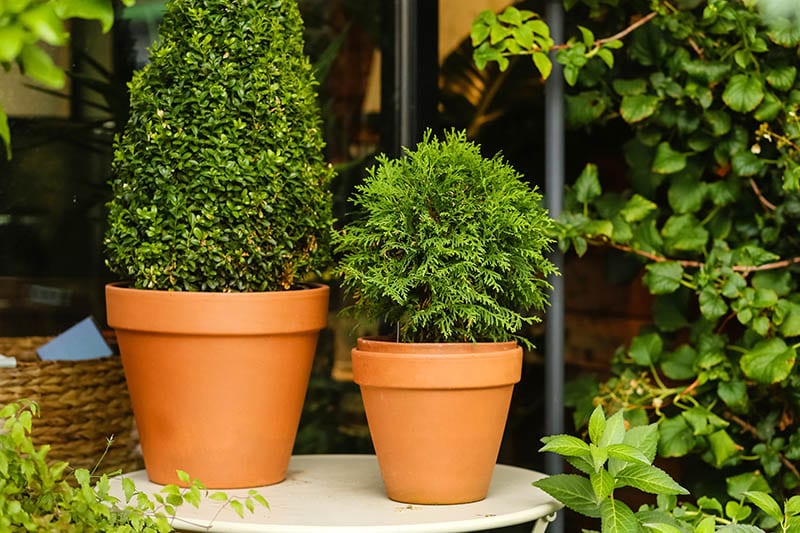
Boxwoods are a garden staple sometimes affectionately called boxes. They’re one of the most iconic garden shrubs, useful in sunny and shady areas alike. You can prune them into specific shapes, let them run wild, or keep a traditional shelf-like design with regular trimming.
Regardless of how you shape them, boxwoods thrive with company. Let’s check out some of the best companion plants for boxwoods below in more detail.
The 6 Companion Planting with Boxwoods
Unlike vegetables, where the aim is to increase yield and repel pests, companion planting with shrubs is a bit different. The key is to choose bright-blooming perennials or annuals to complement the dense, uniform look of boxwood shrubs. Ideally, you want something that isn’t too close to the shrub’s height but without creating too much distance.
The good news is that you have a lot of flexibility because of how easy it is to shape boxwoods and their high shade tolerance. You can use low rectangular borders of boxwoods with flowers in front or behind, or plant boxes in shade gardens to complement your ferns and other plants.
Boxwoods are pretty boring as far as texture goes, so flowers or plants with different textures will create visual interest and jazz up your garden. Boxes are typically used for borders because they blend into the background, visually speaking.
Lastly, boxwoods do great in herb gardens. In fact, some places in the world use boxwood as a substitute for hops for brewing beer! So, it makes perfect sense you’d put boxwoods with other herbs you want to dry or use in teas.
1. Roses
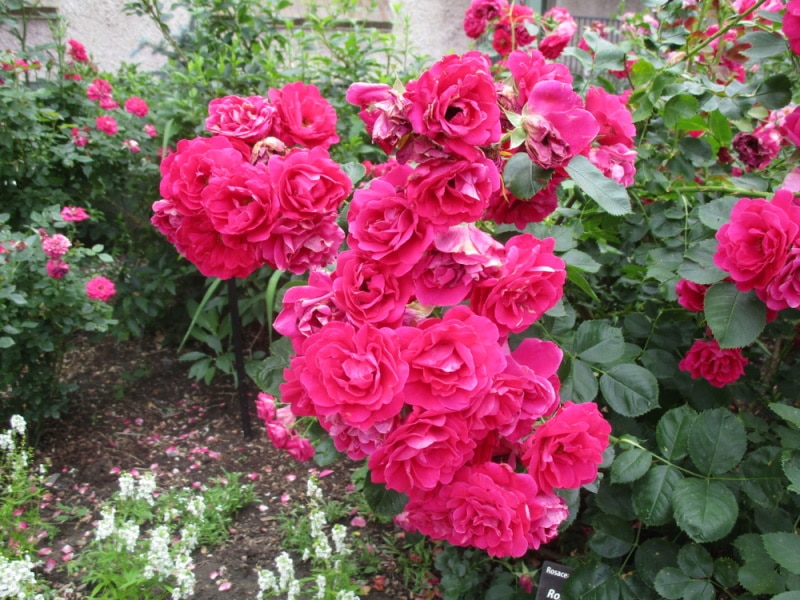
Roses are perhaps the most well-known companion for boxwoods, adding tons of visual interest with multilayered petals and a giant color palette. There are numerous types of roses, but generally, they bloom in the spring.
In warmer areas, roses will bloom year-round, so you can plan for perpetually blooming roses. As with most colorful flowers, rose flower heads should be periodically trimmed off to encourage new growth and more full blooms.
2. Rosemary
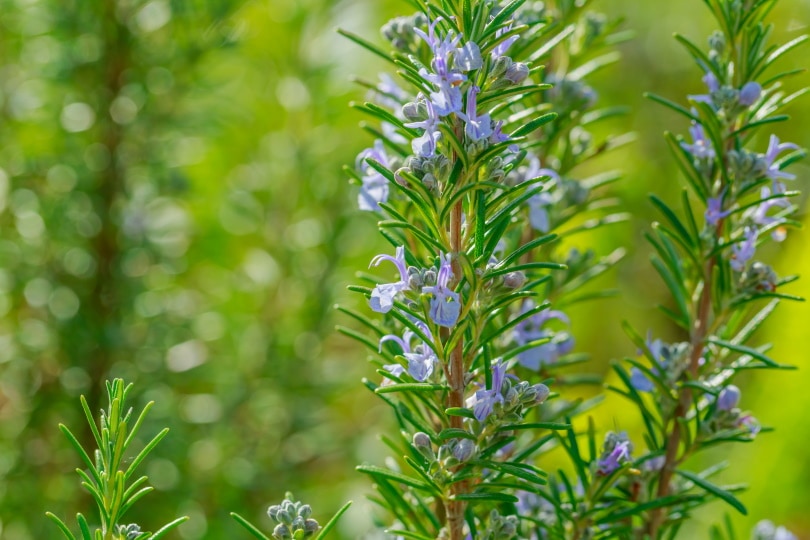
Like other herbs, rosemary is a great companion for boxwoods, but it’s special. Among the herbs, only rosemary grows large enough to shape and use as a direct textural complement for boxwood shrubs. Others are good as smaller companions and for harvesting herbs, but rosemary foliage will stand out and not blend with your boxes.
In warmer zones, rosemary will come back year after year, but you’ll have to replant annually in colder climates.
3. Boxwood

You might be thinking this one is a mistake, but it’s not. There are 70 known species of boxwood shrubs, and each one has a distinct look and size.
If you’re interested in making a garden composed entirely of shrubs, you don’t even have to look outside the genus. Mix and match dwarf species as walkway borders and use taller boxwoods to create a hedge maze. If that seems like too much work, you could try your hand at shaping a circular boxwood.
4. Hydrangea

Hydrangeas are a lot like roses in that you can use them in numerous ways in conjunction with boxwood shrubs. You can use boxes as a border below a wall, and use hanging planters with hydrangeas above.
Have some space in front or behind the boxwoods? Plant hydrangea shrubs in the missing space to break up the green monotony. You can mix and match large boxwoods with small hydrangeas, vice versa, or however you want!
5. Foxglove
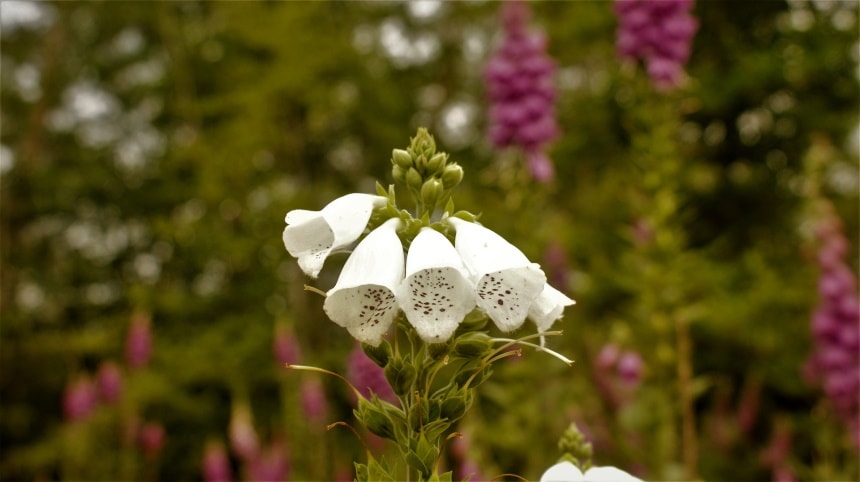
Also called Digitalis, Foxglove is the perfect companion for boxwoods if you want something low maintenance. It grows fairly tall, about 5 feet, with long spikes on the ends that contrast nicely with boxwoods. They’re also shade tolerant and drought tolerant, so you can use them in the sun or a partial shade garden.
Foxglove’s lurid purple blooms are a classic and easy way to spruce up your boring boxwoods.
6. Begonia
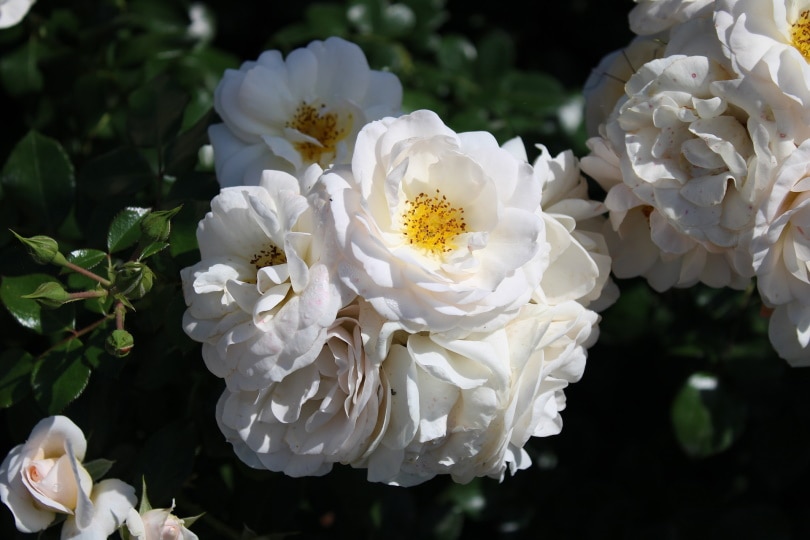
Begonias are a natural ally for densely leaved boxwoods, with textured leaves and gorgeous pastel blooms. You can pair begonias with razor-edged box pathways or add them to a circular boxwood for a whimsical touch.
In gazebos and other enclosed areas, a single circular dwarf boxwood with a potted begonia plant is the ideal amount of greenery.
Worst Companion Plants for Boxwoods
There are some plants you should watch out for when you have boxwoods. They might overshadow your boxes, carry disease, or be considered invasive species. Let’s see what to not plant with boxwood below.
- Cypress: cypress will shade out your boxwood
- Liriope: aggressively invasive species
- Japanese spurge: can spread boxwood blight
- Sweetbox: can spread boxwood blight
Conclusion
Boxwoods have been the go-to shrub for homes since the days of the Egyptians. Paired together with some gorgeous roses, lurid foxglove, or pale begonias is the perfect way to spice up a boring garden pathway. Dwarf boxwoods and potted plants can add just the right amount of foliage for enclosed outdoor areas like decks, porches, or gazebos as well.
Featured Image Credit: Eliz A, Shutterstock
Contents
